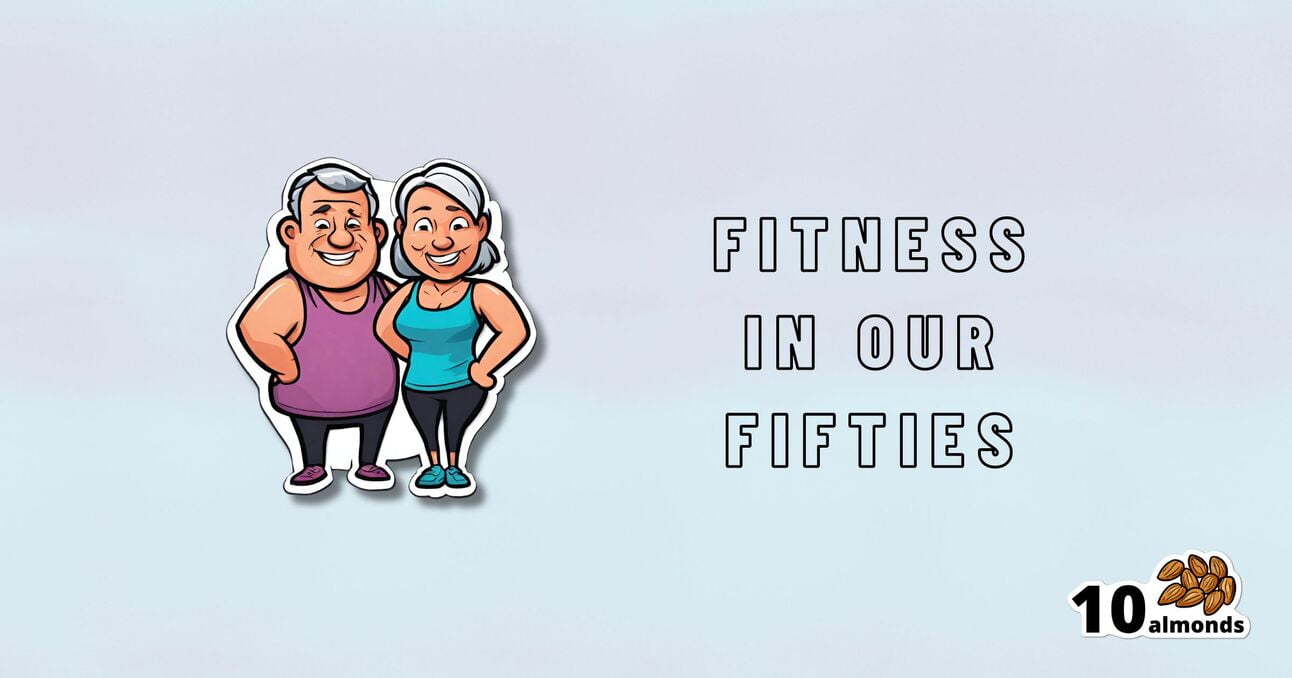Fitness In Our Fifties
Your fitness after 50: Focus on lifelong habits over temporary goals. Age with health, not decline. Want specifics? We’ve got them.

It’s Q&A Day at 10almonds!
Have a question or a request? We love to hear from you!
In cases where we’ve already covered something, we might link to what we wrote before, but will always be happy to revisit any of our topics again in the future too—there’s always more to say!
As ever: if the question/request can be answered briefly, we’ll do it here in our Q&A Thursday edition. If not, we’ll make a main feature of it shortly afterwards!
So, no question/request too big or small 😎
Q: What’s a worthwhile fitness goal for people in their 50s?
A: At 10almonds, we think that goals are great but habits are better.
If your goal is to run a marathon, that’s a fine goal, and can be very motivating, but then after the marathon, then what? You’ll look back on it as a great achievement, but what will it do for your future health?
PS, yes, marathon-running in one’s middle age is a fine and good activity for most people. Maybe skip it if you have osteoporosis or some other relevant problem (check with your doctor), but…
Marathons in Mid- and Later-Life ← we wrote about the science of it here
👆 PS, we also explored some science that may be applicable to your other question, on the same page as that about marathons!
The thing about habits vs goals is that habits give ongoing cumulative (often even: compounding) benefits:
How To Really Pick Up (And Keep!) Those Habits
If you pressingly want advice on goals though, our advice is this:
Make it your goal to be prepared for the health challenges of later life. It may seem gloomy to say that old age is coming for us all if something else doesn’t get us first, but the fact is, old age does not have to come with age-related decline, and the very least, we can increase our healthspan (so we’re hitting 90 with most of the good health we enjoyed in our 70s, for example, or hitting 80 with most of the good health we enjoyed in our 60s).
If that goal seems a little wishy-washy, here are some very specific and practical ideas to get you started:
Train For The Event Of Your Life!
As for the limits and/or extents of how much we can do in that regard? Here are what two aging experts have to say:
And here’s what we at 10almonds had to say:
Age & Aging: What Can (And Can’t) We Do About It?
Take care!
Share This Post
Learn To Grow
Sign up for weekly gardening tips, product reviews and discounts.




